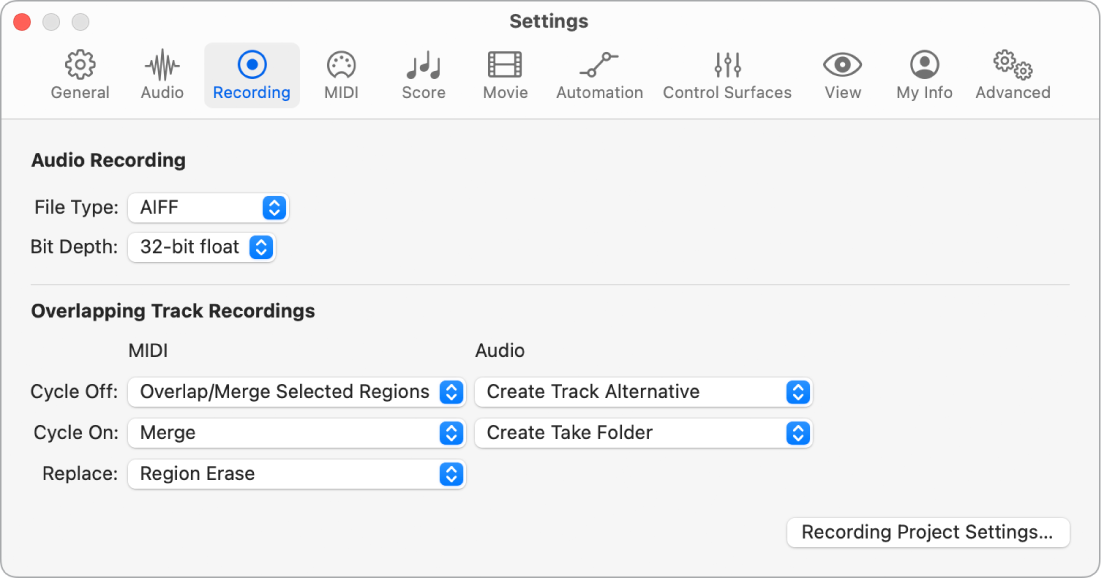Bit Depth For Recording is the measurement of the number of bits used to represent each sample in digital audio recording. Bit depth affects the dynamic range and resolution of the recording.
Bit depth is an important factor in digital audio recording as it directly affects the quality of the recording. It determines the amount of information captured in each sample of the digital audio file, which in turn affects the dynamic range and resolution of the recording.
Bit depth is measured in bits and is usually 24 bits or 16 bits. Higher bit depth means better quality recording as it captures more information and provides higher definition audio. In the music industry, 24-bit depth is the standard for recording. It is crucial to have a good understanding of bit depth when producing high-quality digital audio.

Credit: zerohour.uk.com
Different Bit Depths For Recording
Bit depth for recording refers to the number of bits of information captured during the digital recording process. It ranges from 16 to 24 bits, with higher bit depths resulting in a higher dynamic range and better audio quality, making it a crucial consideration for professional music producers and audio engineers.
Different Bit Depths for Recording Bit depth is an important aspect to consider when recording audio. It determines the range and resolution of the amplitude that can be captured and stored for each sample in a digital audio file. There are three standard bit depths for recording: 16-bit, 24-bit, and 32-bit. In this post, we’ll take a closer look at each of these bit depths and their benefits.
16-bit Recording
16-bit recording is the most common bit depth used in audio production. It provides a dynamic range of around 96dB, which is suitable for most musical recordings. With 16-bit recording, the amplitude range is divided into 65,536 possible values, allowing for finely detailed audio capture. However, due to the limited resolution, 16-bit recording can result in noticeable levels of noise in quiet sections of the audio.
24-bit Recording
24-bit recording is preferred by many professional audio engineers as it provides a higher dynamic range of around 144dB. It offers better resolution than 16-bit recording, with the amplitude range divided into 16,777,216 possible values. 24-bit recording has a much wider range of capture, allowing it to capture subtle nuances, resulting in a more accurate representation of the original sound. Due to its greater resolution, 24-bit recording produces a cleaner signal as there is less noise in the recording.
32-bit Recording
32-bit recording is a newer format that is becoming increasingly popular in modern audio production. It provides an incredibly high dynamic range of around 192dB, making it ideal for capturing subtle details in very quiet audio recordings. 32-bit recording allows for amplitude ranges divided into 4.3 billion possible values, offering even greater resolution than 24-bit recording. This means that there is almost no noise in 32-bit recordings, resulting in exceptionally clean signal capture. In conclusion, choosing the right bit depth for recording will depend on the type of audio you are recording and your specific needs. 16-bit is fine for most musical recordings, but 24-bit is preferred by professional audio engineers for its wider range and higher resolution. 32-bit recording offers the highest dynamic range and resolution of all three formats, making it ideal for capturing subtle details and delivering exceptionally clean audio signals. Consider the type of recording you’ll be working on before selecting the appropriate bit depth, and test accordingly to ensure you capture the best quality recordings.

Credit: support.apple.com
:max_bytes(150000):strip_icc()/podcast-studio-1132835815-499bf87be9ae4b7785056affeef0b318.jpg)
Credit: www.lifewire.com
Frequently Asked Questions On Bit Depth For Recording
Is It Better To Record In 16-bit Or 24-bit?
It is better to record in 24-bit instead of 16-bit as it captures more detail and provides higher dynamic range. This makes it ideal for professional audio recording and allows for greater flexibility in mixing and editing.
What Bit Depth Should I Record In?
Record in 24-bit depth to capture a greater dynamic range and minimize quantization noise. This will result in higher-quality recordings with more detail and depth. Additionally, it allows for more flexibility in post-production and mixing.
Should You Record At 44.1 Or 48?
Record at 48 kHz if you’re doing video production or working on a project with digital audio equipment that supports 48 kHz. For CDs or other digital formats that play back at 44. 1 kHz, record at 44. 1 kHz.
The difference in sound quality is negligible and not worth worrying about.
Is 24 Or 32-bit Depth Better?
Both 24 and 32-bit depth offer high-quality images, but 32-bit depth provides more color information and detail. If you’re working with professional graphics, choose 32-bit depth. However, for web and basic graphics, 24-bit depth is sufficient.
Conclusion
So there you have it! Bit depth is an important factor to consider when recording audio material. Choosing the right bit depth helps preserve the dynamic range and ensures the clarity of audio signals. It is also important to select the right audio interface and recording software to achieve the desired sound quality.
Always keep in mind that bit depth is a critical element in creating high-quality recordings that will stand the test of time. Happy recording!